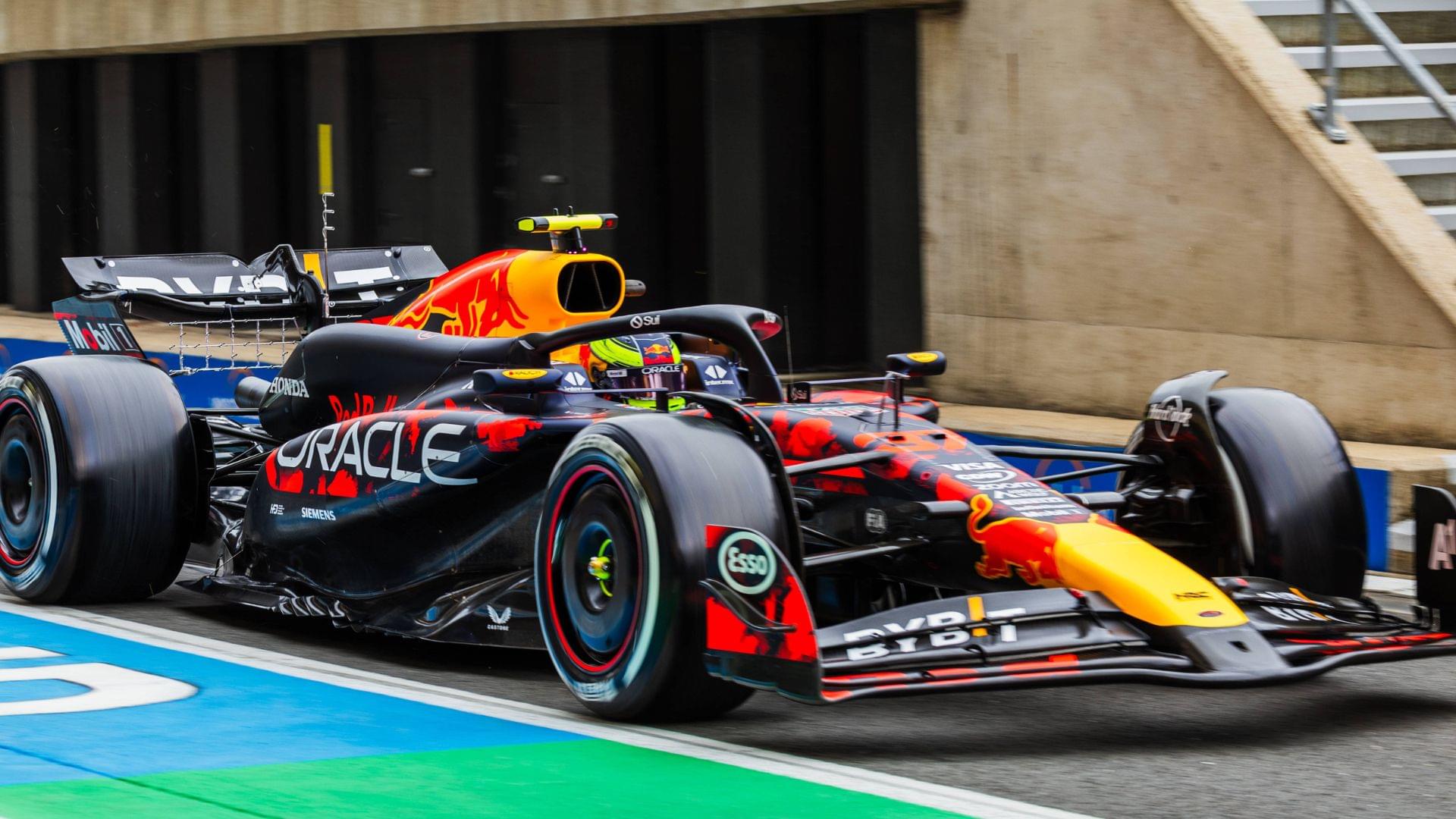Innovation and engineering prowess are vital in F1 where milliseconds can determine the outcome of a race. Therefore, teams regularly work on their car to improve their chances of getting closer to the front of the field. However, in doing so, Red Bull has landed itself into a controversy due to a ride height adjustment device dubbed as the “bib adjustment trick.”
This “device” is aimed at enhancing aerodynamic performance and has sparked allegations of cheating and raised questions about fairness in the sport.
BREAKING Red Bull will make changes to the RB20 following discussions with the FIA ️
This comes after Red Bull’s F1 rivals had alerted the FIA to a device in the RB20 cockpit that is believed could be used to adjust the ride height at the front of the car. pic.twitter.com/mxA36EEOqi
— Crash.net – Formula 1 (@CRASH_NET_F1) October 17, 2024
Initially, suspicions were raised about the possibility of a certain team being able to change the height of the ‘bib’ or ‘T-tray’ at the front of the car’s floor between qualifying and the race via a device in the cockpit.
How is it cheating, you ask? Well, such adjustments to the car are prohibited under parc ferme from the moment the cars are out of the garage in qualifying.
Mark Hughes of The Race explains that in theory, running the floor low in qualifying helps the driver extract maximum aerodynamic performance. Meanwhile, raising the floor for the race would allow an increase in the weight of the car when fuelled up and would also avoid wearing out the underbody plank beyond the permitted 10mm thickness.
Now, imagine a driver having the ability to raise or lower the height of the car in a matter of moments and gaining an advantage. This clever design would enable the front of the car to lower while entering corners, improving downforce and grip, and raise on straights for maximum speed.
However, as it turns out it is impossible for the drivers to play around with the device.
The mechanics behind the trick
As admitted by a Red Bull spokesperson, while the device exists it cannot be manoeuvred after the car is assembled. In simple words, the drivers cannot adjust the height whenever they wish to because of the location of the device.
Located in the cockpit, the device hides under the footwell and cannot be accessed, explains Speedcafe. Under the heel support, there is a screw mechanism and the device requires a tool to adjust.
Furthermore, to make any changes, the mechanics will need to remove the nose, another panel, and a carbon section. It would require multiple mechanics to perform it quickly. Therefore, it wouldn’t be possible to do all of that and not catch the attention of the FIA officials under ‘parc ferme’ conditions.
The controversy around Red Bull’s usage of the device
While there is no clarity over whether or not the team is using the device under parc ferme and whether or not they are gaining an advantage, the whispers of “cheating” echo throughout the paddock.
After the revelation, Red Bull boldly declared, “We are cooperating fully with the FIA’s investigation and believe we are operating within the rules.” Yet, rivals have raised eyebrows claiming that the Milton-Keynes team may have an unfair advantage.
Reflecting on the report, McLaren driver Oscar Piastri said, “If it is something that’s being used, it’s clearly not been pushing the boundaries. It’s been out of the grey area and into a black area.”
Similar to Piastri, his teammate, Lando Norris too highlighted that “It’s good that the FIA are doing such a thing. There’s a difference between black and white stuff like this and there’s a difference between Formula 1 and pushing the boundaries and creating new things.”
️ “It’s good the FIA is doing such a thing.”
Lando Norris is pleased that the FIA has taken action over Red Bull’s ride-height adjustment device. pic.twitter.com/X9leIPLoXS
— The Race (@wearetherace) October 17, 2024
Furthermore, Lewis Hamilton said, “God knows how long they have had that, and they’ve been winning championships. Maybe that stops now.”
Red Bull drivers — Max Verstappen and Sergio Perez — admitted that they “knew” about such a trick. But since it is of no use to them once the car is put together, they never even discussed it in the briefing. When asked if it had any impact on the performance, he replied, “No”.







